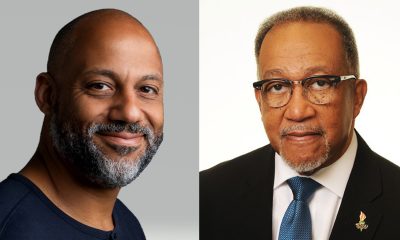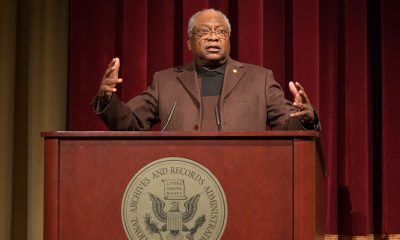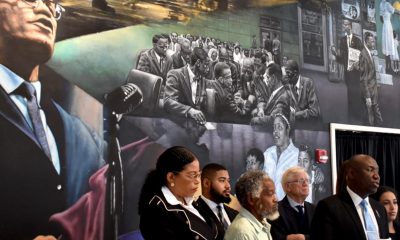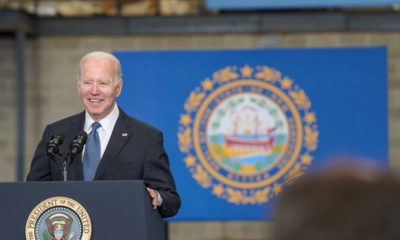National
When Can Police Use Lethal Force Against a Fleeing Suspect?

In this April 4, 2015, frame from video provided by Attorney L. Chris Stewart representing the family of Walter Lamer Scott, Scott appears to be running away from City Patrolman Michael Thomas Slager, right, in North Charleston, S.C. Slager was charged with murder Tuesday, hours after law enforcement officials viewed the dramatic video that appears to show Slager shooting a fleeing Scott several times in the back. (AP Photo/Courtesy of L. Chris Stewart)
ERIC TUCKER, Associated Press
WASHINGTON (AP) — The law gives police officers latitude to use deadly force when they feel physically endangered, but there’s far less legal flexibility when it comes to opening fire at fleeing individuals. Here’s a look at legal issues raised by Saturday’s police shooting in South Carolina in which video recorded by a bystander shows a black man being shot in the back and killed as he runs away.
___
IS THERE A FEDERAL LEGAL STANDARD TO JUDGE THE APPROPRIATENESS OF POLICE USE OF FORCE?
Yes. The Supreme Court held in a 1989 case, Graham v. Connor, that the appropriateness of use of force by officers “must be judged from the perspective of a reasonable officer on the scene,” rather than evaluated through 20/20 hindsight.
That standard is designed to take into account that police officers are frequently asked to make split-second decisions during fast-evolving confrontations, and should not be subject to overly harsh second guessing. The Justice Department cited that legal threshold last month when it declined to prosecute former Ferguson, Missouri police officer Darren Wilson in the shooting death last summer of an unarmed black 18-year-old.
___
CAN POLICE OFFICERS SHOOT AT FLEEING INDIVIDUALS?
Only in very narrow circumstances. A seminal 1985 Supreme Court case, Tennessee vs. Garner, held that the police may not shoot at a fleeing person unless the officer reasonably believes that the individual poses a significant physical danger to the officer or others in the community. That means officers are expected to take other, less-deadly action during a foot or car pursuit unless the person being chased is seen as an immediate safety risk.
In other words, a police officer who fires at a fleeing man who a moment earlier murdered a convenience store clerk may have reasonable grounds to argue that the shooting was justified. But if that same robber never fired his own weapon, the officer would likely have a much harder argument.
“You don’t shoot fleeing felons. You apprehend them unless there are exigent circumstances — emergencies — that require urgent police action to safeguard the community as a whole,” said Greg Gilbertson, a police practices expert and criminal justice professor at Centralia College in Washington state.
Gilbertson said he thought the video of the shooting of Walter Scott in North Charleston, South Carolina, was “insane” given what he said was the apparent lack of justification.
Though the legal standard has been established, courts continue to hear cases involving use of force against fleeing felons under a variety of circumstances. Just last year, the Supreme Court sided with Arkansas police officers who were sued over a high-speed, two-state chase that ended with the deaths of the fleeing driver and his passenger.
___
IN CASES WHERE POLICE OFFICERS ARE NOT SUPPOSED TO USE DEADLY FORCE AGAINST A FLEEING PERSON, WHAT SHOULD THEY DO?
Each case involving a suspect who flees the police, whether in a car or on foot, poses a balancing test for an officer, said Chuck Drago, a police practices expert and former Oviedo, Florida, police chief.
“Am I creating more of a danger by chasing this person than if I let this person stay at large?” Drago said. “Especially in a vehicle pursuit, is it worth risking everyone on the road to catch this guy?”
In a pursuit on foot, the more reasonable option might be to call for backup, including perhaps with a police dog, so that other officers can set up a perimeter and trap the suspect, Drago said.
In the South Carolina case, the former lawyer for the North Charleston officer, Michael Thomas Slager, said Monday that Slager felt threatened and had fired because Scott was trying to grab his stun gun — an older model that would have had to have been manually reloaded. But if in fact the stun gun was on the ground at the time Scott fled, Drago said, then “there is no longer a threat. The threat is gone.”
There’s also no indication on the video that the officer shouted any instructions after the physical encounter between the men.
Slager, a five-year veteran of the police force, has been fired.
___
IS THERE A ROLE FOR FEDERAL INVOLVEMENT IN THE INVESTIGATION?
The FBI and the department’s Civil Rights Division are working together to examine the case. Though the officer faces a state murder charge in South Carolina, the federal government will be looking at the shooting for potential civil rights violations.
That means federal agents and prosecutors will look to establish that the officer willfully deprived Scott of his civil rights and used more force than the law allowed.
The Justice Department often investigates police use of force, though not all investigations result in prosecution. In some cases, such as in the 1991 beating of Rodney King in Los Angeles, federal prosecutors have moved forward either with their own investigation or prosecution after the conclusion of a state case.
____
Follow Eric Tucker on Twitter at http://www.twitter.com/etuckerAP
Copyright 2015 The Associated Press. All rights reserved. This material may not be published, broadcast, rewritten or redistributed.
Activism
Oakland Post: Week of April 24 – 30, 2024
The printed Weekly Edition of the Oakland Post: Week of April 24 – 30, 2024

To enlarge your view of this issue, use the slider, magnifying glass icon or full page icon in the lower right corner of the browser window. ![]()
Activism
Oakland Post: Week of April 17 – 23, 2024
The printed Weekly Edition of the Oakland Post: Week of April 17 – 23, 2024

To enlarge your view of this issue, use the slider, magnifying glass icon or full page icon in the lower right corner of the browser window. ![]()
Barbara Lee
Congresswoman Barbara Lee Issues Statement on Deaths of Humanitarian Aid Volunteers in Gaza
On April 2, a day after an Israeli airstrike erroneously killed seven employees of World Central Kitchen (WCK), a humanitarian organization delivering aid in the Gaza Strip, a statement was release by Rep. Barbara Lee (D-CA-12). “This is a devastating and avoidable tragedy. My prayers go to the families and loved ones of the selfless members of the World Central Kitchen team whose lives were lost,” said Lee.
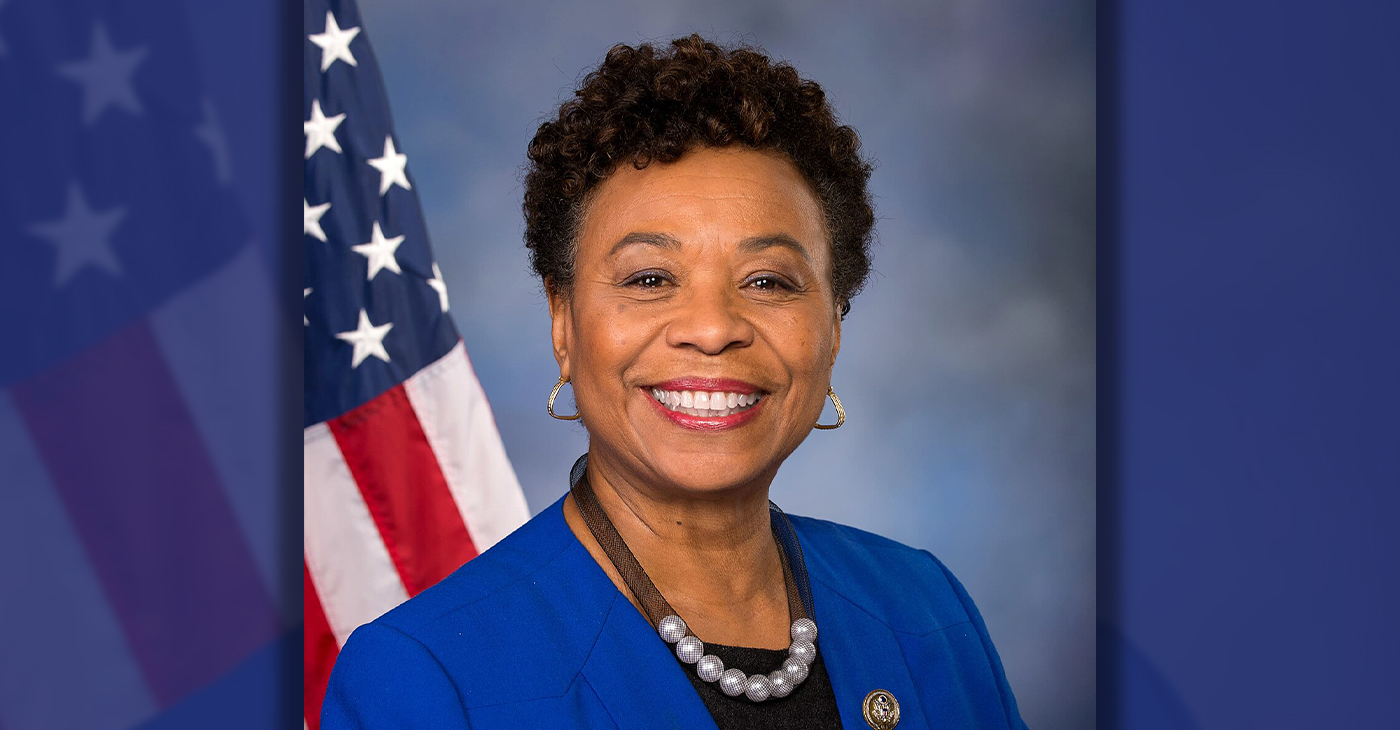
By California Black Media
On April 2, a day after an Israeli airstrike erroneously killed seven employees of World Central Kitchen (WCK), a humanitarian organization delivering aid in the Gaza Strip, a statement was release by Rep. Barbara Lee (D-CA-12).
“This is a devastating and avoidable tragedy. My prayers go to the families and loved ones of the selfless members of the World Central Kitchen team whose lives were lost,” said Lee.
The same day, it was confirmed by the organization that the humanitarian aid volunteers were killed in a strike carried out by Israel Defense Forces (IDF). Prior to the incident, members of the team had been travelling in two armored vehicles marked with the WCF logo and they had been coordinating their movements with the IDF. The group had successfully delivered 10 tons of humanitarian food in a deconflicted zone when its convoy was struck.
“This is not only an attack against WCK. This is an attack on humanitarian organizations showing up in the direst situations where food is being used as a weapon of war. This is unforgivable,” said Erin Gore, chief executive officer of World Central Kitchen.
The seven victims included a U.S. citizen as well as others from Australia, Poland, the United Kingdom, Canada, and Palestine.
Lee has been a vocal advocate for a ceasefire in Gaza and has supported actions by President Joe Biden to airdrop humanitarian aid in the area.
“Far too many civilians have lost their lives as a result of Benjamin Netanyahu’s reprehensible military offensive. The U.S. must join with our allies and demand an immediate, permanent ceasefire – it’s long overdue,” Lee said.
-

 Community2 weeks ago
Community2 weeks agoFinancial Assistance Bill for Descendants of Enslaved Persons to Help Them Purchase, Own, or Maintain a Home
-

 Activism3 weeks ago
Activism3 weeks agoOakland Post: Week of April 3 – 6, 2024
-

 Business2 weeks ago
Business2 weeks agoV.P. Kamala Harris: Americans With Criminal Records Will Soon Be Eligible for SBA Loans
-

 Community2 weeks ago
Community2 weeks agoAG Bonta Says Oakland School Leaders Should Comply with State Laws to Avoid ‘Disparate Harm’ When Closing or Merging Schools
-

 Activism2 weeks ago
Activism2 weeks agoOakland Post: Week of April 10 – 16, 2024
-

 Community1 week ago
Community1 week agoOakland WNBA Player to be Inducted Into Hall of Fame
-

 City Government2 weeks ago
City Government2 weeks agoLAO Releases Report on Racial and Ethnic Disparities in California Child Welfare System
-
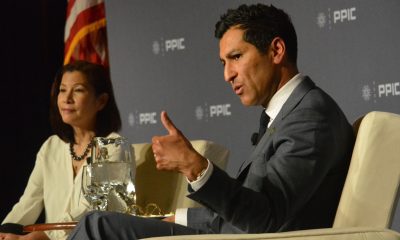
 Community2 weeks ago
Community2 weeks agoThe Year Ahead: Assembly Speaker Rivas Discusses Priorities, Problems




